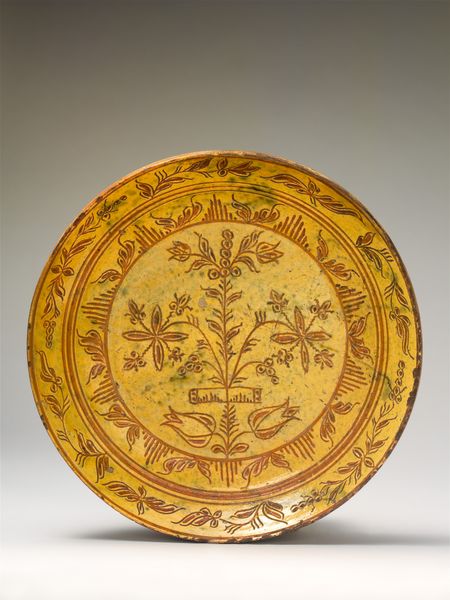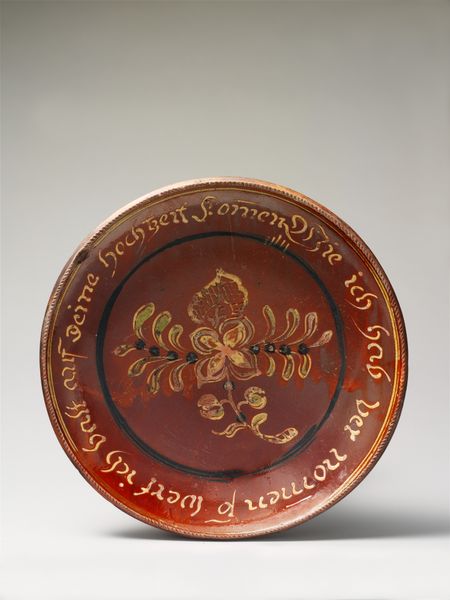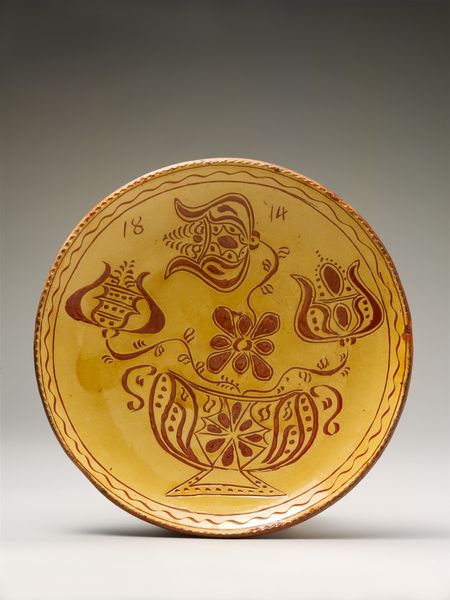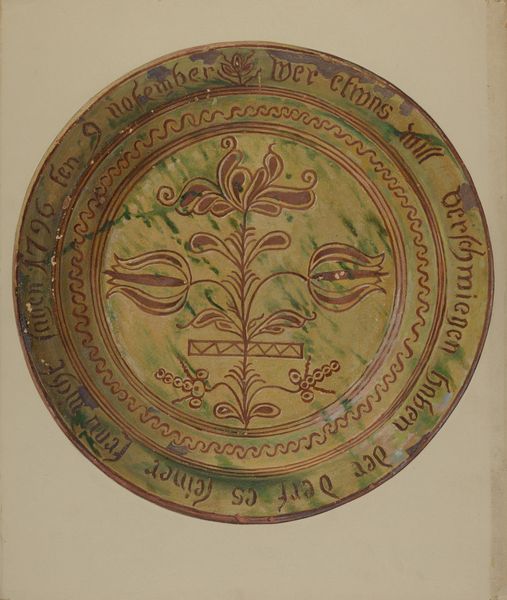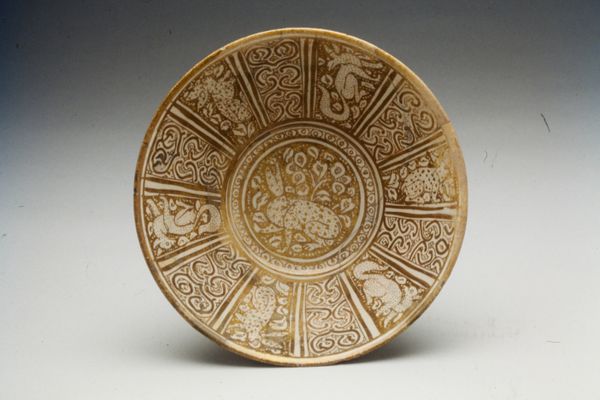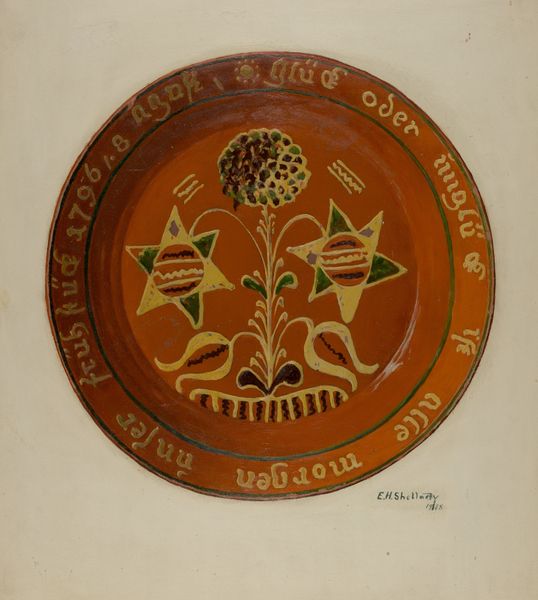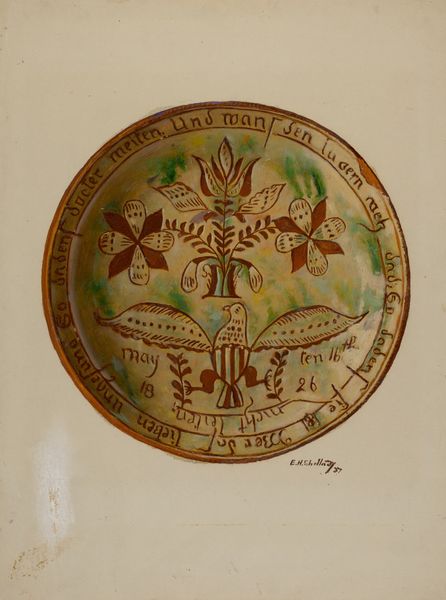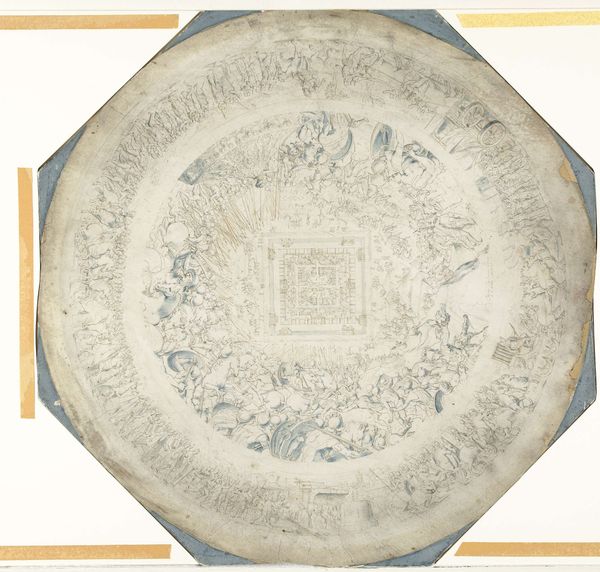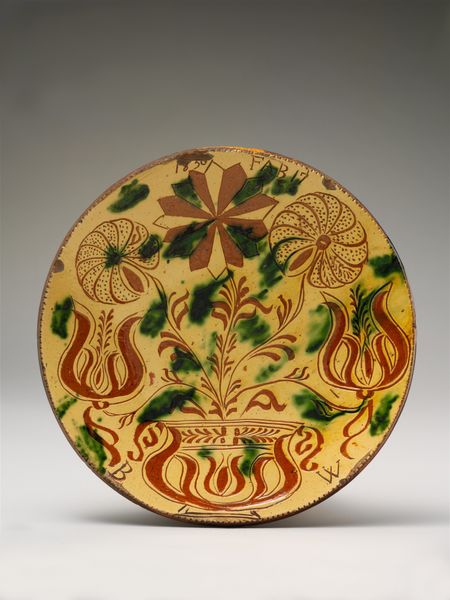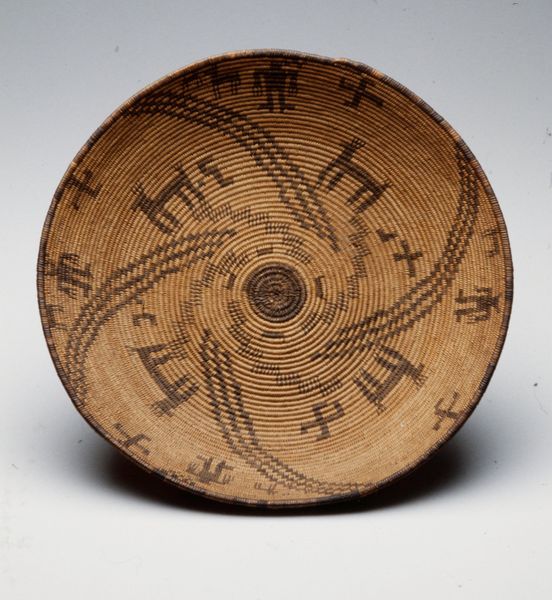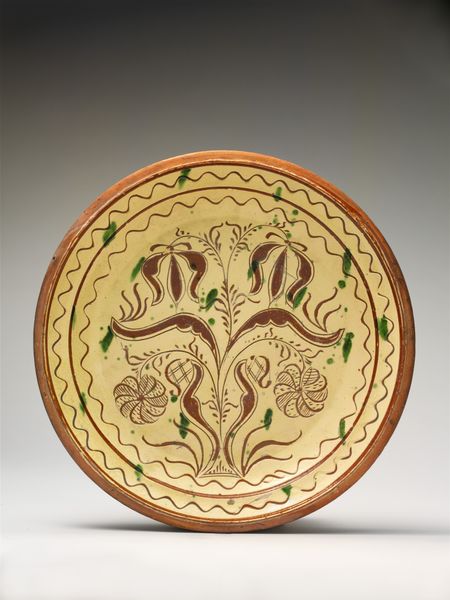
ceramic, earthenware
#
portrait
#
ceramic
#
earthenware
#
stoneware
#
folk-art
#
ceramic
#
decorative-art
Dimensions: Diam. 11 1/4 in. (28.6 cm)
Copyright: Public Domain
Editor: Here we have Samuel Troxel's "Plate," created in 1846. It’s earthenware, a piece of folk art from Pennsylvania on display at the Met. The colors are so muted, almost autumnal. I’m immediately drawn to the central image of a dove with “Liberty Fr. Polk” written above it. What catches your eye about this piece, particularly from a historical perspective? Curator: Well, what I see is a fascinating piece of material culture deeply embedded in its socio-political moment. Consider that this plate was made during a period of intense political engagement, particularly with the presidency of James K. Polk. The slogan “Liberty Fr. Polk” – presumably “Liberty, for Polk" – speaks to the politicization of everyday objects and the fervent support that political figures garnered, or, indeed, attempted to manufacture, through visual culture. Editor: So, it’s almost like a campaign poster…but on a plate? Curator: Exactly. These decorative objects reflect how political ideologies permeated daily life, extending even into the domestic sphere. The ceramic material is key, as it shows these ideals and views are widely available across society, compared to more expensive materials that would have confined it to wealthier patrons. Does the image of the dove relate to any specific political ideologies? Editor: The dove usually symbolizes peace, so maybe there's a message of hoping for peace under Polk's leadership? The artist even put initials along with his name, possibly indicating a signature with other contributors. Curator: Precisely. And remember, Polk's presidency was defined by expansionism and conflict. So the presence of peace, with a possible shared production, creates layers to explore the sociopolitical complexities of the era and what "peace" may have implied for different parties involved. Thanks to the lettering around the plate edge, the maker encourages the consumer to internalize these viewpoints during dinner. Editor: I see how the context really brings a richer meaning to what I initially just saw as a simple folk-art piece! The cultural setting makes a great deal of difference in its reception and meaning. Curator: Absolutely. It’s through understanding its place in history that we can truly appreciate its significance.
Comments
No comments
Be the first to comment and join the conversation on the ultimate creative platform.
